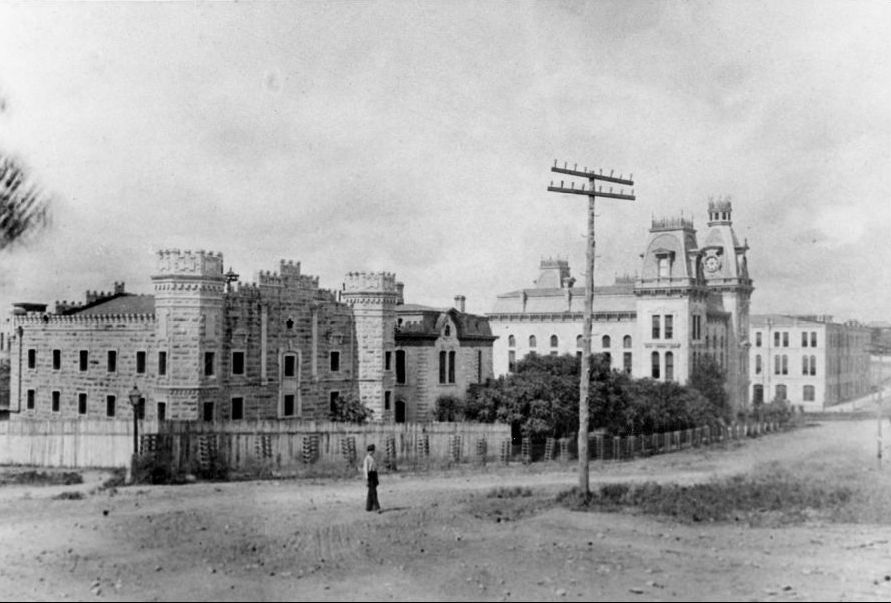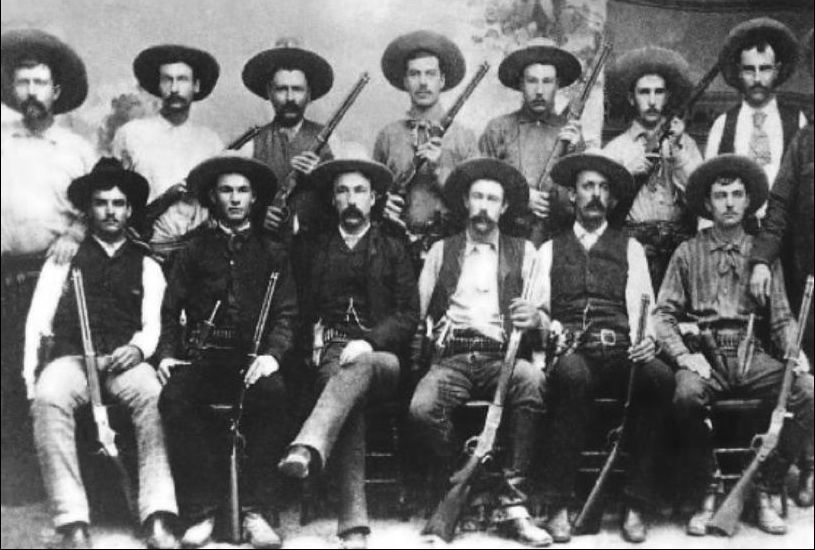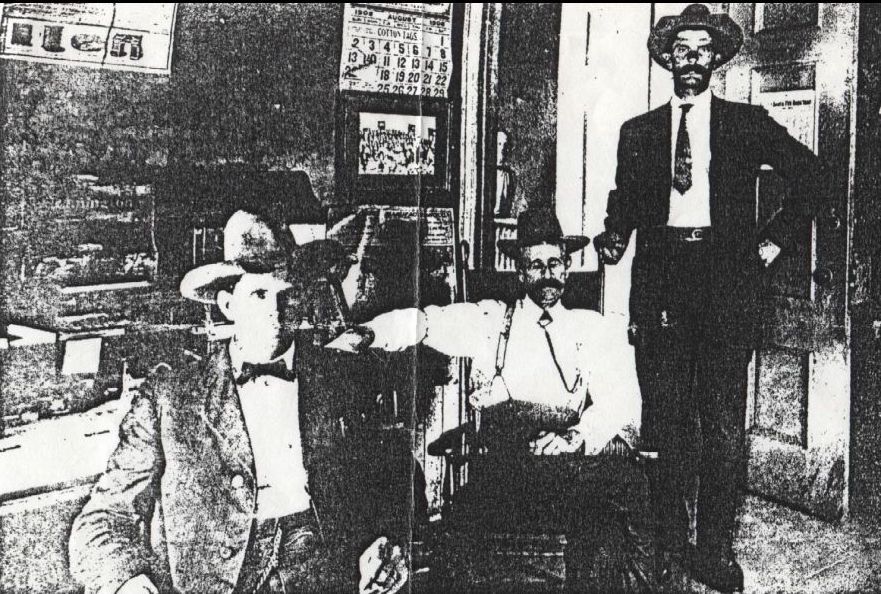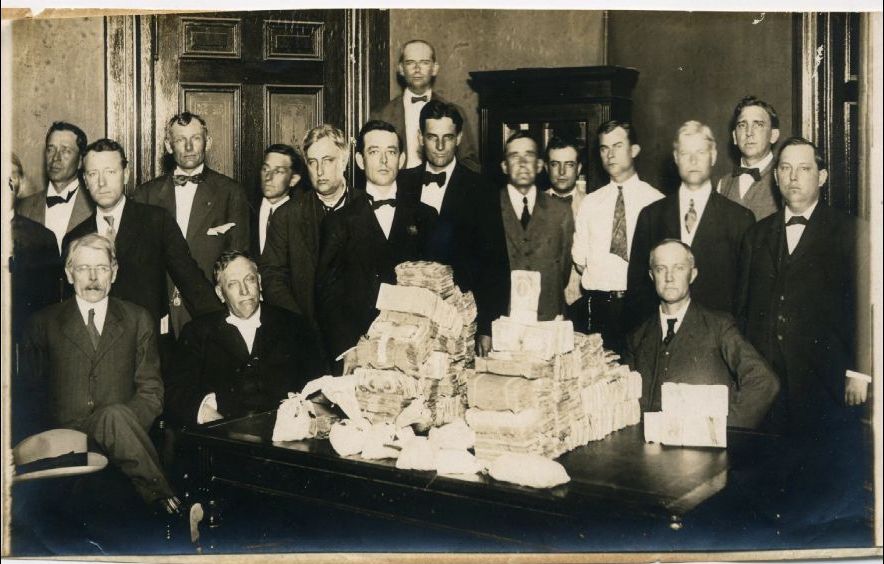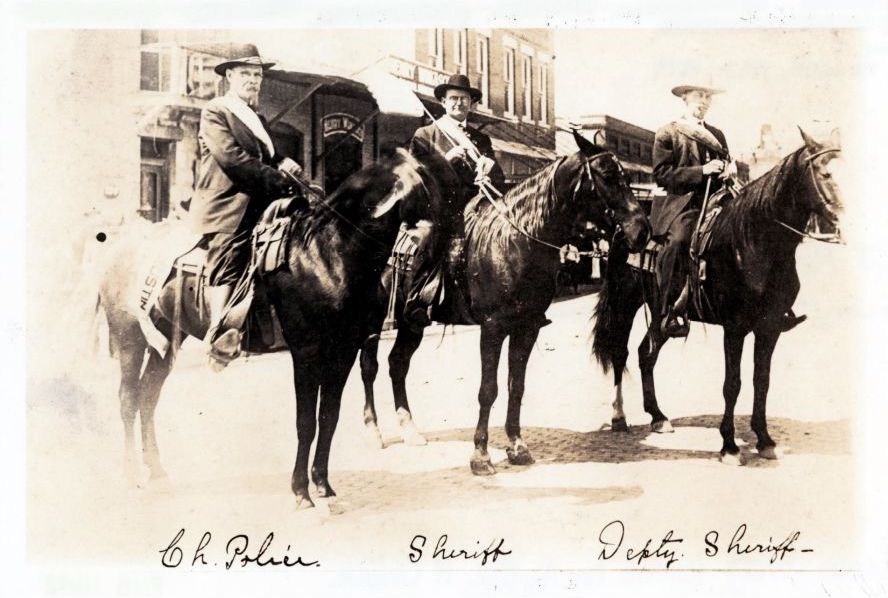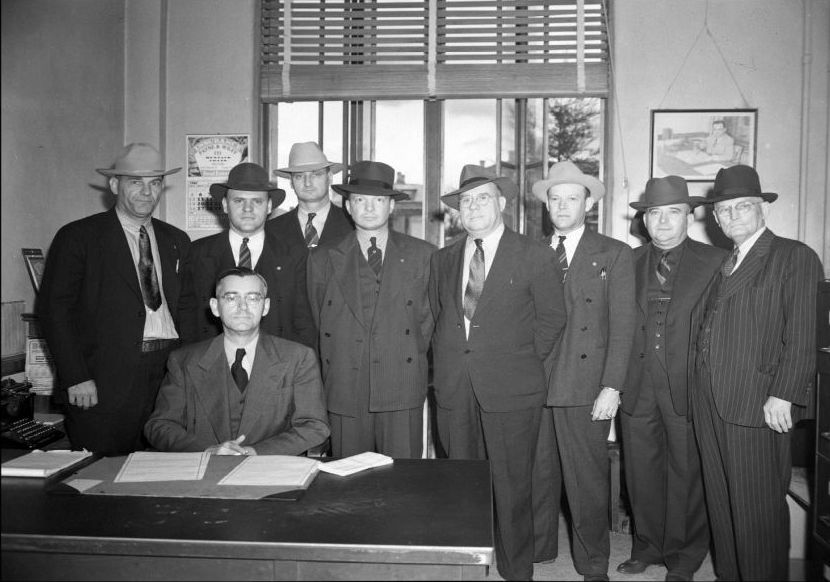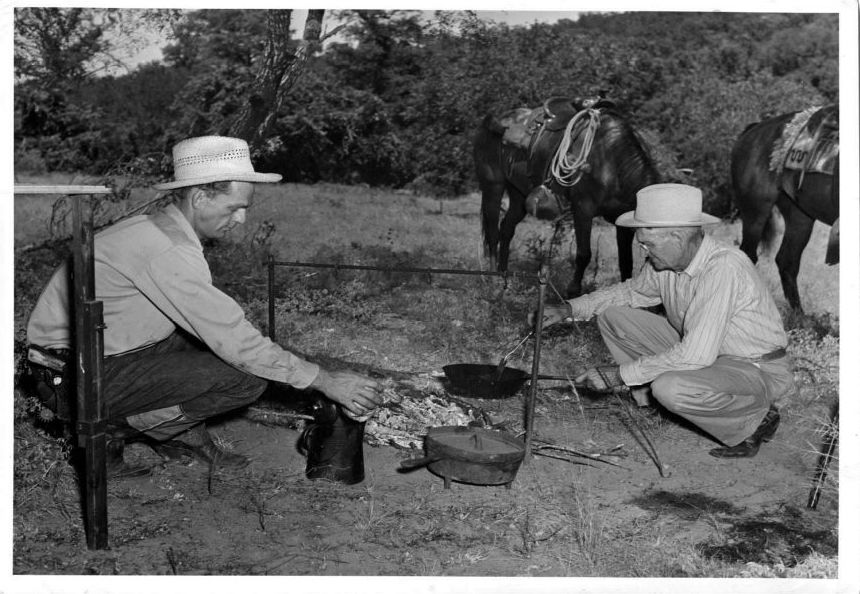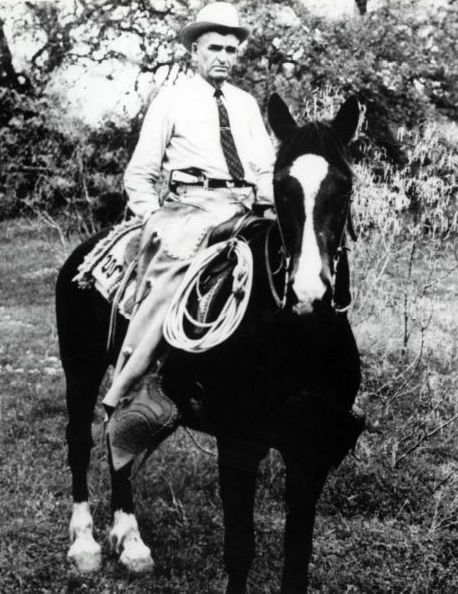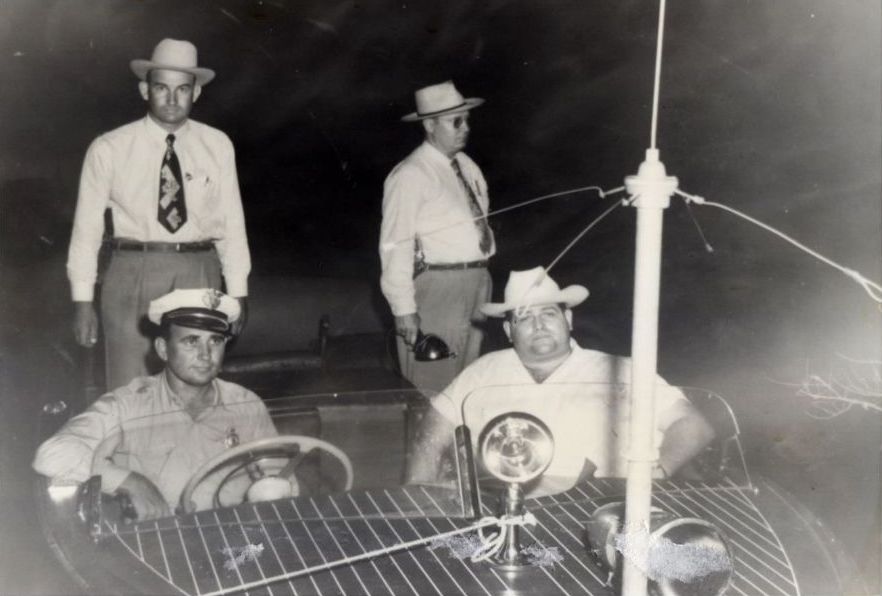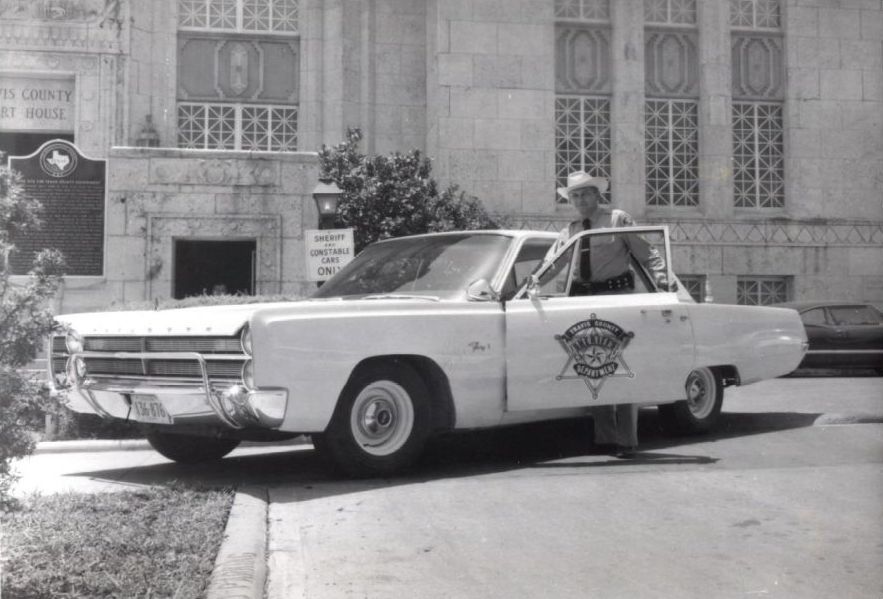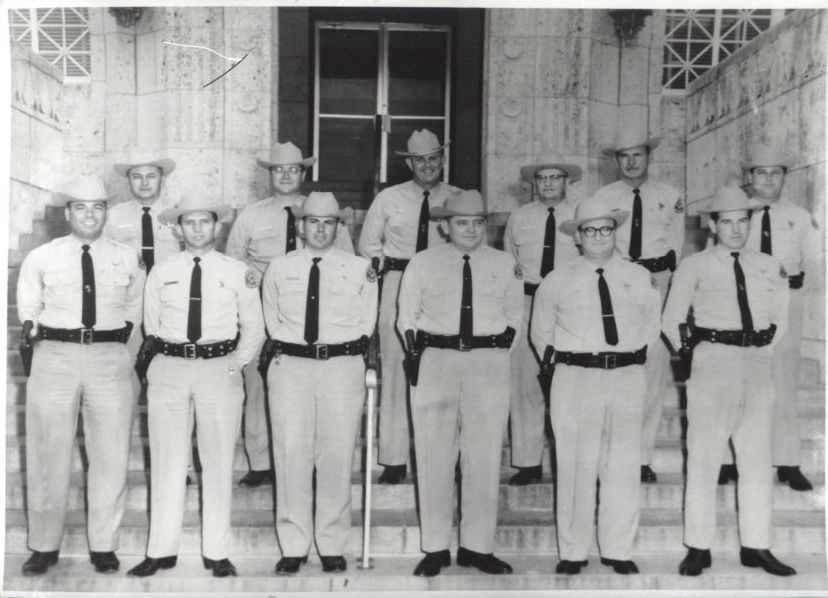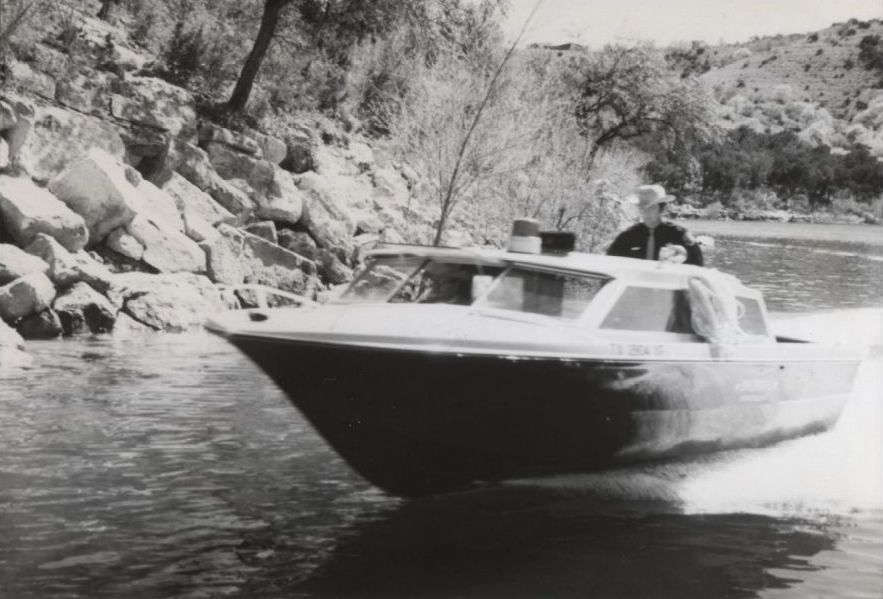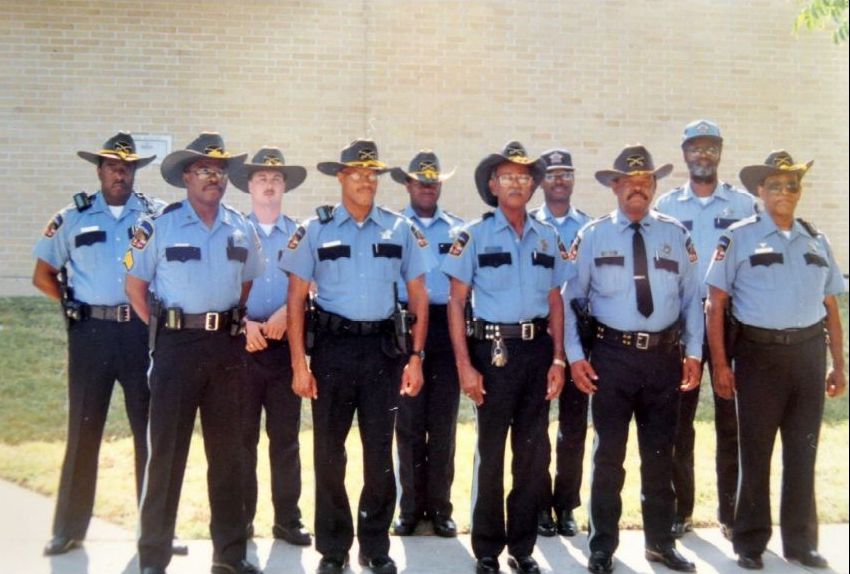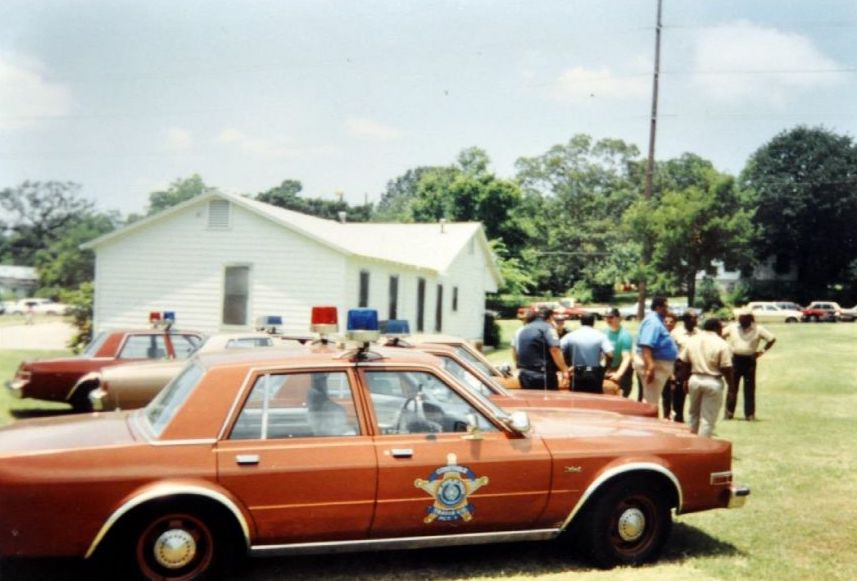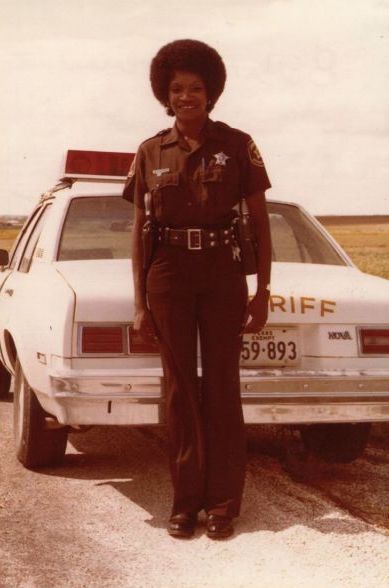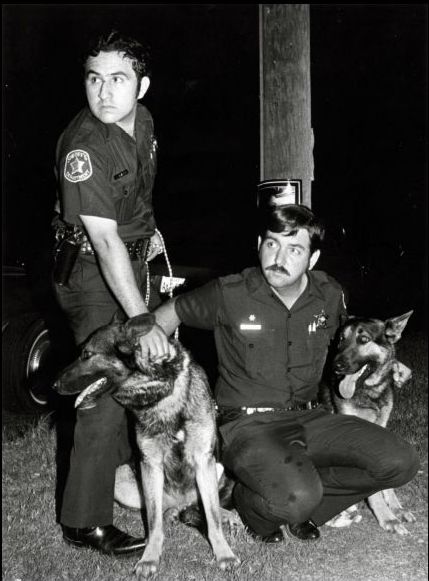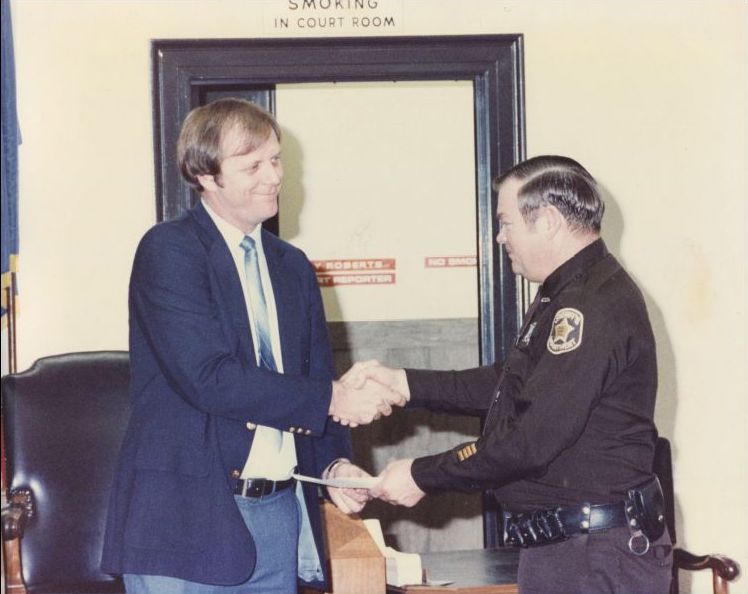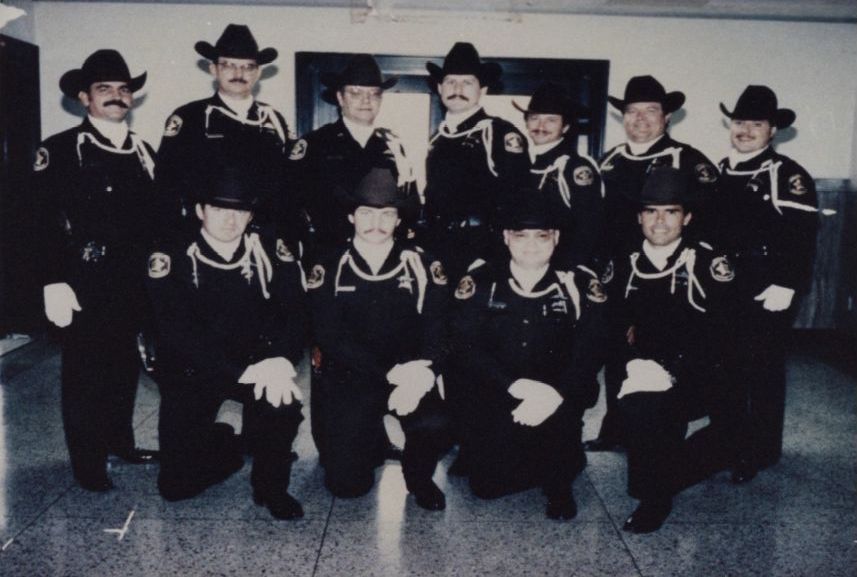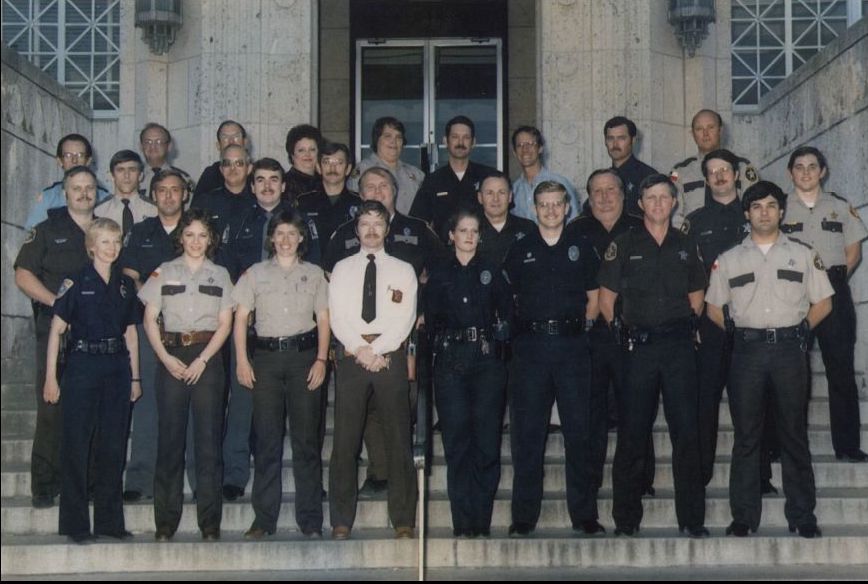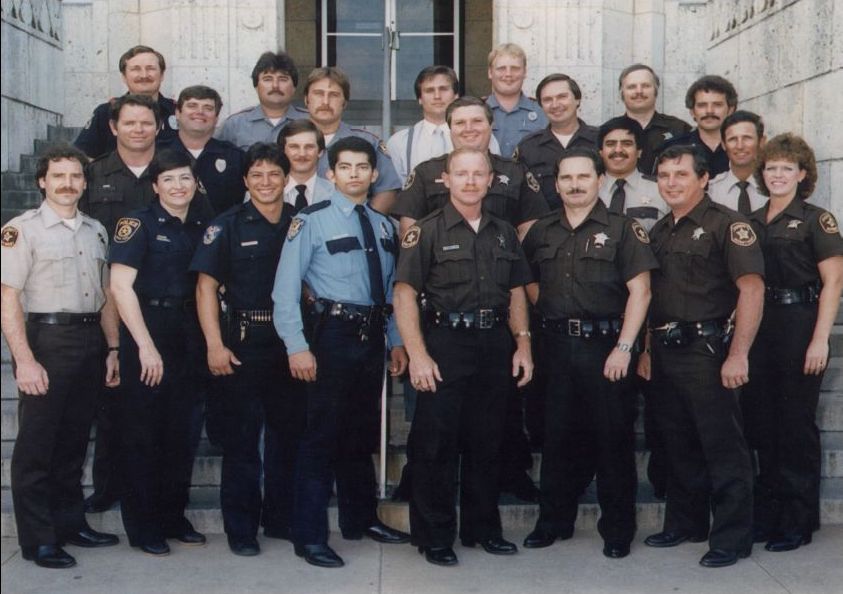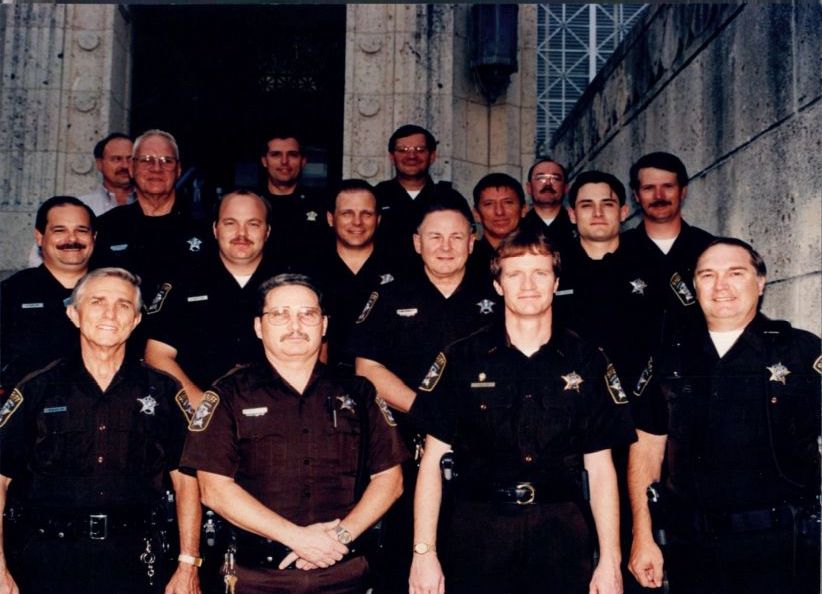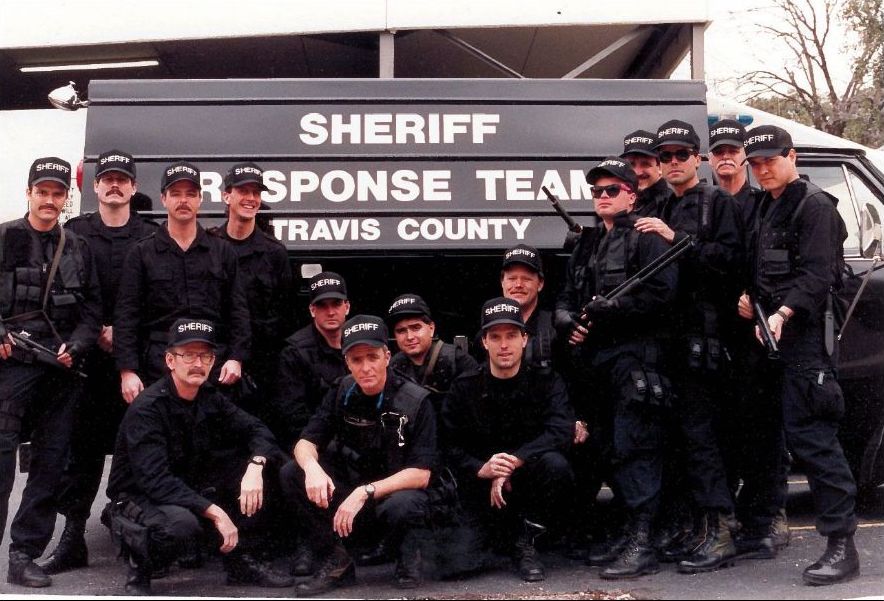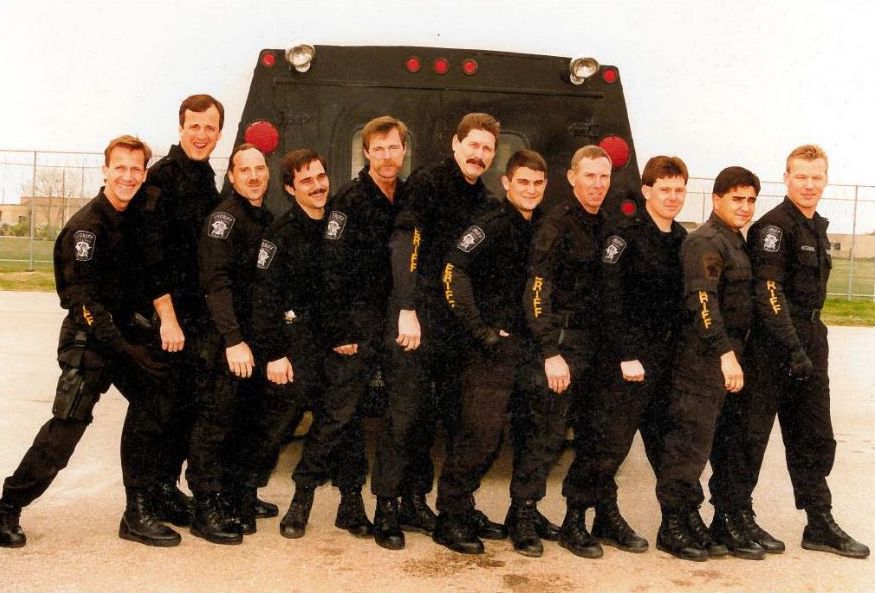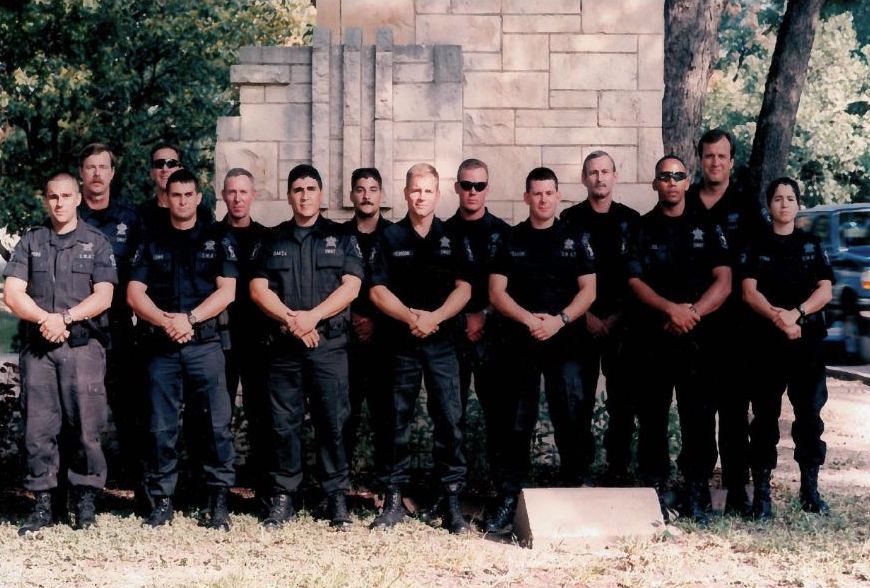History Day 2013
The History of Travis County Law Enforcement

Held on October 25, 2013, the 6th annual Travis County History Day focused on the history of Travis County law enforcement. The program was emceed by Commissioner Margaret Gómez and featured special speakers Doyne Bailey, Sheriff of Travis County from 1981-1992, and Mike Cox, historian and award-winning author, who shared stories and personal experiences with law enforcement in Travis County.
Law enforcement has played an important role in the development of Travis County throughout its history, from the lawless days of the frontier to the present. Since our county’s establishment in 1840, Sheriffs, Constables and their Deputies have been charged with the important tasks of protecting citizens’ lives and property and keeping the peace. By enforcing laws set in place by the government, they make our ever-growing communities safer.
Sheriff’s Office

The office of the Sheriff is one that dates back more than 1000 years with origins in England. In 1836, the constitution of the newly created Republic of Texas formally required the position of sheriff, and the office has been provided for under every Texas constitution since.
The first sheriff in Travis County was elected in February of 1840, just after the county’s establishment. Travis County and the encompassing area, known as the Travis District, consisted of roughly 40,000 square miles. It was the sheriff’s responsibility to provide law enforcement within these boundaries. The sheriff appointed deputies to assist in his duties, which included the protection of citizens’ lives and property, keeping public order, preventing crime, arresting lawbreakers, taking care of the county courthouse, and administering the county jail. The sheriff also served writs, subpoenas, summonses, and processes, in both civil and criminal matters, a job requiring long hours in the saddle every week.
By the 1850s, the city of Austin had begun to prosper, and the rapidly growing population made Travis County a breeding ground for lawlessness. It was not an easy job to be the county sheriff. Rural parts of the county were particularly unsettled, troubled with outlawry, vigilante justice, and feuds.. Such potentially hazardous situations contributed to the sometimes rapid turnover of Texas sheriffs during the nineteenth century. Patrols were done on horseback, firearms were provided by each individual, and uniforms consisted solely of a sheriff’s badge. The sheriff was responsible for all law enforcement within Travis County until the city of Austin created its own police department in 1851.

As the years progressed, so did the methods and tools used by the Travis County Sheriff’s Office. With the introduction of the telephone, the Sheriff’s Office could receive calls of all types – from reports of crimes or accidents to those of missing persons, livestock, or neighborhood complaints. Automobiles came to be used in place of horses. In the 1940s, under the guidance of Sheriff H.W. “Rip” Collins, fingerprinting, criminal records, and reporting systems were put into place. Sheriff T.O. Lang, who took office in 1953, built the office staff from fewer than 20 persons to over 100. By 1967, his goals of having marked patrol cars, uniformed officers, and a boat patrol on Lake Travis had become a reality.
Today, the Travis County Sheriff’s Office has law enforcement jurisdiction in the entire county, although the department does not normally exercise this authority within the city limits of Austin, which are served by the Austin Police Department. The 825 square miles outside the Austin city limits are patrolled by the Travis County Sheriff’s Office, and officers answer calls ranging from traffic violations to homicides.
The Sheriff’s Office has many law enforcement components, including patrol, criminal investigations, a full-time SWAT team, estray, highway enforcement, and victim services. The law enforcement fleet includes not only numerous cars and motorcycles, but also SWAT vehicles and patrol boats. The Sheriff’s Office also has many non-law enforcement units, such as the Corrections Bureau, which ensures the security and maintenance of the correctional facilities and administers all inmate related programs. The Community Outreach unit includes programs that address adult, home, and child safety and school resource officers. In all, there are approximately 1,700 employees of the Travis County Sheriff’s Office.
Online Exhibit on the History of the Travis County Sheriff’s Office
Constables

The office of constable originated in England over 1,000 years ago; in Texas, it has existed since 1823, when the area was under Mexican rule. The office of constable was included in the Republic of Texas Constitution in 1836, which provided for the election of a sheriff and “a sufficient number of constables” in each county. It was the duty of the constable be the conservator of the peace throughout the county.
Constables played a large role in enforcing the law across Texas in its early days. They were often the most active law enforcement officers in their precincts, and, therefore, in their counties. It was not an easy task – early constables often had few deputies to call on for assistance, no holding facilities of their own for offenders, and had to deal with lawbreakers who could be their neighbors. Many of the rural constables on the frontier were largely inexperienced in handling the more violent offenders. Over the years, the office of constable transitioned away from primarily performing law enforcement duties to taking on more of an administrative role.
Today, there are five constables in Travis County, one for each of the justice of the peace precincts. The constable is the chief process server for the justice of the peace courts and serves a variety of civil and criminal judicial processes and notices, including subpoenas, warrants, evictions, family violence protective orders, property auctions, and juvenile process. While serving process issued by the courts and providing bailiffs are the primary duties of the modern constable, some constables also provide patrol, investigative, and security services as well. All constables and their deputies are fully empowered peace officers with countywide jurisdiction.
Around 300 individuals have served as constables in Travis County, the first of whom were elected in 1840. While great effort has been made to gather the names of all who have served as Travis County constables, some names have yet to be uncovered. The public record of constables and their deputies is both limited and scattered. To a large extent this is because many elected constables manned one-person offices, had few deputies, and their precincts spanned distances far from the center of county business. A constable’s exploits often went largely unreported and unheralded, except to those who lived in the precinct, or when a death was connected to an event. Regardless, constables played a vital role in Texas law enforcement and continue to do so today.
Travis County Sheriffs, Constables and Deputies through the Years
Click on each image to see it’s full size.
Radcliff Platt (center) and his family. Platt served as Travis County Sheriff from 1867-1870, and many of his family members were also involved in law enforcement.
Courtesy of Chief Deputy Jim Sylvester1876 Travis County Jail, located at 11th and Brazos Streets, jailor’s residence, and the Courthouse
Photo No. C00610b, Austin History Center, Austin Public LibraryTexas Rangers Company D, c. 1887. Calvin Grant Aten, who served as a
Travis County Constable of Precinct 4, is shown seated, second from the left.
Sheriff George S. Matthews (left) with Deputies Andrew Townsend (center) and C. White, 1908
Courtesy of Mike Cox
Texas Rangers Company D, c. 1887. Calvin Grant Aten, who served as a
Travis County Constable of Precinct 4, is shown seated, second from the left.
Travis County Sheriff George S. Matthews (center) on horseback, 1917
Photo No. PICB 11698, Austin History Center, Austin Public LibraryPush card for Jim McCoy, c. 1940. McCoy was appointed
Sheriff in 1940, but he did not win election later that year.
Courtesy of Chief Deputy Jim SylvesterSheriff Jim McCoy’s .41 Colt Sheriff H.W. “Rip” Collins (far left) and the Sheriff’s Office staff, January 1, 1941
Photo No. ND-41-137-02, Austin History Center, Austin Public LibrarySheriff Ernest Best (right) cooking breakfast on the range, date unknown
Cattle Raisers Museum, Fort Worth, TexasSheriff Ernest Best, date unknown. Best was Sheriff from 1949-1952.
Photo No. PICA 19675, Austin History Center, Austin Public LibraryEarly boat patrol unit, c. late 1960s
Courtesy of Chief Deputy Jim SylvesterSheriff’s Office patrol car, c. 1967
Courtesy of Chief Deputy Jim SylvesterFirst Travis County Sheriff’s Office uniforms, c. 1967
Courtesy of Chief Deputy Jim SylvesterEarly boat patrol unit, c. 1972
Courtesy of Chief Deputy Jim SylvesterConstable Don Nesby (front row, second from right) and Precinct 1
deputies in the first Travis County Constable uniforms
Courtesy of Willie MadisonOne of the first marked Travis County Constable patrol cars, c. late 1970s
Courtesy of Willie MadisonSheriff’s Department patrol cars, c. 1976
Photo No. PICA 12124, Austin History Center, Austin Public LibraryDeputy Barbara Foreman, c. 1977
Courtesy of Chief Deputy Jim SylvesterCapitol Council of Governments Regional Law Enforcement Academy class, c. 1977.
Margo Frasier (second row, fourth from right) went on to become Sheriff in 1997.
Courtesy of Chief Deputy Jim SylvesterTravis County Deputies Richard Navarro (left) and Randy Crider, c. 1978
Photo No. PICA 29525, Austin History Center, Austin Public LibrarySheriff Doyne Bailey with Deputy Bobby Tiner, c. early 1980s
Courtesy of Chief Deputy Jim SylvesterSheriff’s Office Honor Guard team, 1982
Courtesy of Chief Deputy Jim SylvesterCapitol Council of Governments Regional Law Enforcement Academy class, c. 1986
Courtesy of Chief Deputy Jim SylvesterSheriff’s Office advanced reserve officer training course, 1986
Courtesy of Chief Deputy Jim SylvesterSheriff Terry Keel and Reserve Deputies, 1992
Courtesy of Terry KeelSheriff Terry Keel with Senators Phil Gramm and Bob Dole and Agricultural Commissioner Rick Perry, 1992
Courtesy of Terry KeelFirst SWAT vehicle and the SWAT team, 1992
Courtesy of Chief Deputy Jim SylvesterTravis County SWAT team, 1994
Courtesy of Chief Deputy Jim SylvesterSheriff’s Office deputies and their motorcycles, c. 1995
Courtesy of Chief Deputy Jim SylvesterSheriff’s Office motorcycles, c. 1995
Courtesy of Chief Deputy Jim SylvesterTravis County SWAT team, 1996
Courtesy of Chief Deputy Jim SylvesterSheriff’s Office Correctional Officer Basic Recruit Academy class at Del Valle, 1997
Courtesy of Chief Deputy Jim SylvesterChief Deputy Carlos Lopez of Constable Precinct 5 with Sandra Bullock at the premiere of
“Miss Congeniality” in 2000. Lopez is now the Constable of Precinct 5.
Courtesy of Carlos LopezConstable Precinct 5 Bruce Elfant with deputies, 2009. Elfant is now the Travis County Tax Assessor Collector.
Travis County Archives

